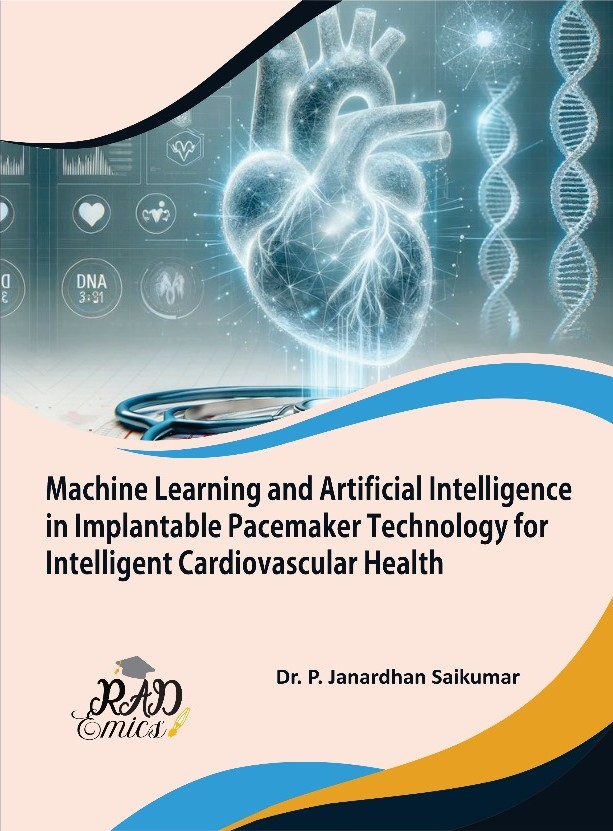
Abstract
The increasing prevalence of cardiac arrhythmias underscores the need for more intelligent and patient-specific pacemaker systems. Conventional pacemakers operate on static, pre-defined settings that often fail to adapt optimally to a patient’s continuously changing cardiac condition. Recent advances in machine learning (ML) offer promising solutions to enhance ECG signal classification accuracy, enabling real-time, personalized pacemaker response optimization. By embedding ML algorithms directly into implantable devices, it becomes possible to detect subtle variations in ECG signals, predict arrhythmic events, and dynamically adjust pacing modes and parameters to suit individual patient needs. This chapter provides a comprehensive overview of the techniques used for ECG signal acquisition, preprocessing, and feature extraction tailored to implantable contexts. It discusses the design and deployment of lightweight supervised and deep learning models that meet stringent constraints on power consumption and computational resources. Critical aspects such as secure data handling, privacy-preserving learning, and regulatory compliance are examined to highlight the challenges and practical considerations for translating these advances to real-world clinical practice. Through an exploration of current research trends, implementation challenges, and ethical imperatives, this chapter outlines a roadmap for developing the next generation of intelligent, adaptive pacemakers driven by robust ECG signal classification.
Introduction
Cardiac arrhythmias represent a significant burden on global healthcare systems, accounting for millions of hospitalizations and considerable mortality each year [1]. Pacemakers remain a primary intervention for managing bradyarrhythmias and conduction disorders, providing electrical impulses to maintain adequate heart rates [2]. While pacemaker technology has advanced steadily in terms of hardware miniaturization [3], battery life, and lead design, the underlying operational logic in many devices remains relatively static and does not fully adapt to the dynamic physiological states of individual patients [4]. This limitation has created an opportunity for more intelligent control strategies that can respond in real time to changing cardiac conditions [5].
Electrocardiogram (ECG) monitoring was the cornerstone of arrhythmia detection and therapy guidance [6]. Continuous ECG signal acquisition generates vast amounts of valuable data that, when interpreted accurately, can reveal subtle patterns indicative of abnormal cardiac activity [7]. Traditional rule-based algorithms embedded in pacemakers detect certain events based on predefined thresholds [8], but these methods often lack the sensitivity and specificity required for early or complex arrhythmia detection [9]. The growing availability of computational resources and advanced signal processing techniques has enabled the application of machine learning to extract deeper insights from ECG data [10].
Machine learning models have demonstrated strong potential for improving the classification of cardiac rhythms by learning from large and diverse ECG datasets [11]. Algorithms ranging from classical supervised methods to deep neural networks are capable of identifying non-linear patterns that would be challenging to define explicitly through hand-crafted rules [12]. Integrating such models directly into implantable devices introduces [13] the possibility of closed-loop systems that can adjust pacing parameters dynamically [14], offering personalized therapy that evolves alongside the patient’s condition [15].